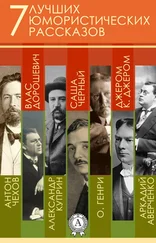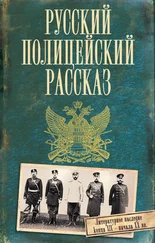But Isolde the Slender was heedless of the court thus paid to her.
In vain her stepmother, Agatha the Angular, urged her to marry. In vain her father, the Margrave of Buggensberg, commanded her to choose the one or the other of the suitors.
Her heart remained unswervingly true to the Gimlet.
From time to time love tokens passed between the lovers. From Jerusalem Guido had sent to her a stick with a notch in it to signify his undying constancy. From Pannonia he sent a piece of board, and from Venetia about two feet of scantling. All these Isolde treasured. At night they lay beneath her pillow.
Then, after years of wandering, Guido had determined to crown his love with a final achievement for Isolde’s sake.
It was his design to return to Ghent, to scale by night the castle cliff and to prove his love for Isolde by killing her father for her, casting her stepmother from the battlements, burning the castle, and carrying her away.
This design he was now hastening to put into execution. Attended by fifty trusty followers under the lead of Carlo the Corkscrew and Beowulf the Bradawl, he had made his way to Ghent. Under cover of night they had reached the foot of the castle cliff; and now, on their hands and knees in single file, they were crawling round and round the spiral path that led up to the gate of the fortress. At six of the clock they had spiralled once. At seven of the clock they had reappeared at the second round, and as the feast in the hall reached its height, they reappeared on the fourth lap.
Guido the Gimlet was in the lead. His coat of mail was hidden beneath a parti-coloured cloak and he bore in his hand a horn.
By arrangement he was to penetrate into the castle by the postern gate in disguise, steal from the Margrave by artifice the key of the great door, and then by a blast of his horn summon his followers to the assault. Alas! there was need for haste, for at this very Yuletide, on this very night, the Margrave, wearied of Isolde’s resistance, had determined to bestow her hand upon Tancred the Tenspot.
It was wassail all in the great hall. The huge Margrave, seated at the head of the board, drained flagon after flagon of wine, and pledged deep the health of Tancred the Tenspot, who sat plumed and armoured beside him.
Great was the merriment of the Margrave, for beside him, crouched upon the floor, was a new jester, whom the seneschal had just admitted by the postern gate, and the novelty of whose jests made the huge sides of the Margrave shake and shake again.
‘Odds Bodikins!’ he roared, ‘but the tale is as rare as it is new! and so the wagoner said to the Pilgrim that sith he had asked him to put him off the wagon at that town, put him off he must, albeit it was but the small of the night – by St. Pancras! whence hath the fellow so novel a tale? – nay, tell it me but once more, haply I may remember it’ – and the Baron fell back in a perfect paroxysm of merriment.
As he fell back, Guido – for the disguised jester was none other than he, that is, than him – sprang forward and seized from the girdle of the Margrave the key of the great door that dangled at his waist.
Then, casting aside the jester’s cloak and cap, he rose to his full height, standing in his coat of mail.
In one hand he brandished the double-headed mace of the Crusader, and in the other a horn.
The guests sprang to their feet, their hands upon their daggers.
‘Guido the Gimlet!’ they cried.
‘Hold,’ said Guido, ‘I have you in my power!!’
Then placing the horn to his lips and drawing a deep breath, he blew with his utmost force.
And then again he blew – blew like anything.
Not a sound came.
The horn wouldn’t blow!
‘Seize him!’ cried the Baron.
‘Stop,’ said Guido, ‘I claim the laws of chivalry. I am here to seek the Lady Isolde, betrothed by you to Tancred. Let me fight Tancred in single combat, man to man.’
A shout of approbation gave consent.
The combat that followed was terrific.
First Guido, raising his mace high in the air with both hands, brought it down with terrible force on Tancred’s mailed head. Then Guido stood still, and Tancred raising his mace in the air brought it down upon Guido’s head. Then Tancred stood still and turned his back, and Guido, swinging his mace sideways, gave him a terrific blow from behind, midway, right centre. Tancred returned the blow. Then Tancred knelt down on his hands and knees and Guido brought the mace down on his back. It was a sheer contest of skill and agility. For a time the issue was doubtful. Then Tancred’s armour began to bend, his blows weakened, he fell prone. Guido pressed his advantage and hammered him out as flat as a sardine can. Then placing his foot on Tancred’s chest, he lowered his vizor and looked around about him.
At this second there was a resounding shriek.
Isolde the Slender, alarmed by the sound of the blows, precipitated herself into the room.
For a moment the lovers looked into each other’s faces.
Then with their countenances distraught with agony they fell swooning in different directions.
There had been a mistake!
Guido was not Guido, and Isolde was not Isolde. They were wrong about the miniatures. Each of them was a picture of somebody else.
Torrents of remorse flooded over the lovers’ hearts.
Isolde thought of the unhappy Tancred, hammered out as flat as a picture-card and hopelessly spoilt; of Conrad the Cocoanut head first in the mud, and Sickfried the Susceptible coiled up with agonies of sulphuric acid.
Guido thought of the dead Saracens and the slaughtered Turks.
And all for nothing!
The guerdon of their love had proved vain. Each of them was not what the other had thought. So it is ever with the loves of this world, and herein is the medieval allegory of this tale.
The hearts of the two lovers broke together.
They expired.
Meantime Carlo the Corkscrew and Beowulf the Bradawl, and their forty followers, were hustling down the spirals as fast as they could crawl, hind end uppermost.
Gertrude the Governess: or, Simple Seventeen
Synopsis of Previous Chapters: There are no Previous Chapters.
It was a wild and stormy night on the West Coast of Scotland. This, however, is immaterial to the present story, as the scene is not laid in the West of Scotland. For the matter of that the weather was just as bad on the East Coast of Ireland.
But the scene of this narrative is laid in the South of England and takes place in and around Knotacentinum Towers (pronounced as if written Nosham Taws), the seat of Lord Knotacent (pronounced as if written Nosh).
But it is not necessary to pronounce either of these names in reading them.
Nosham Taws was a typical English home. The main part of the house was an Elizabethan structure of warm red brick, while the elder portion, of which the Earl was inordinately proud, still showed the outlines of a Norman Keep, to which had been added a Lancastrian Jail and a Plantagenet Orphan Asylum. From the house in all directions stretched magnificent woodland and park with oaks and elms of immemorial antiquity, while nearer the house stood raspberry bushes and geranium plants which had been set out by the Crusaders.
About the grand old mansion the air was loud with the chirping of thrushes, the cawing of partridges and the clear sweet note of the rook, while deer, antelope and other quadrupeds strutted about the lawn so tame as to eat off the sun-dial. In fact, the place was a regular menagerie.
From the house downwards through the park stretched a beautiful broad avenue laid out by Henry VII.
Lord Nosh stood upon the hearthrug of the library. Trained diplomat and statesman as he was, his stern aristocratic face was upside down with fury.
Читать дальше
Конец ознакомительного отрывка
Купить книгу












